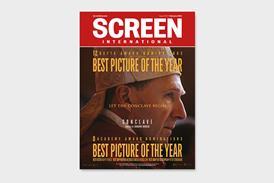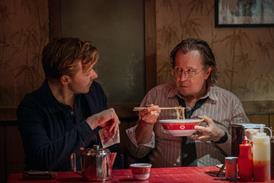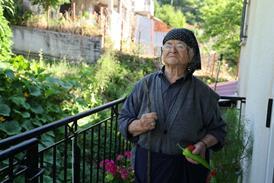From the big bucks 1980s to the private equity boom, Cannes has been synonymous with the business of film. Nick Roddick, a former editor of Screen International, charts its development as an international deal-making hub.
I remember standing outside the Petit Carlton with a British producer some time in the early 1980s. It was 1:30am and the crowd extended as far as you could see. 'At this rate,' he said, 'it's soon going to reach Nice Airport: you'll get off the plane and someone will hand you a beer.'
He was wrong: the Petit Carlton is now a furniture shop. However, the festival has certainly expanded since then, even further from the days when it did what it said on the tin: provide a celebration of film, with stars, snappers and very few suits.
But you can't have representatives of the film business gathering in one place for long before someone says: 'Show me the money,' and the balance began to tip towards business in the 1970s, when British mogul Lew Grade and others began holding court at the Hotel du Cap.
There have so far been five main ages of Cannes. First, the Palaeozoic era, when the festival was still a cultural event. Then came the New Wave, hitting the beaches in the late 1950s, upending the French film industry and - in 1968 - the festival itself (see below).
In retrospect, that was the birth of the modern era, when Cannes got split into the official (the Competition), the maverick (Directors' Fortnight, set up as a direct result of '68) and the market, which was just beginning.
The 1980s were the Jurassic era - the glory years when money sloshed around, much of it in suitcases (one well-known producer regularly sent an assistant by boat to Monaco with a suitcase full of cash to bank). This was the age of Carolco, Cannon and Credit Lyonnais Nederland, when junk bonds and presales proliferated until the business finally imploded. This was followed by the Great Fear of the early 1990s, when business appeared to boom because there was so much product; but was actually bust because there were so few buyers.
The only colour that really counts in Cannes is green.
Since the mid-1990s, we have seen several different Cannes evolve. First, there was the Sundance era, in the wake of sex, lies and videotape's Palme d'Or in 1989. 'Quirky' was briefly the buzz-word. The US indie boom came and went; but the idea that Cannes could create its own rules gradually took over, ushering in the next era: the age of 'our little secret'.
Instead of being a tool of the market, Cannes became the market. For every film from China, Iran, Argentina or Korea that goes on to modest box-office success, there are a dozen that are hits on the festival circuit alone.
The most recent change, which came with the new millennium, saw Cannes come full circle. After feeling uneasy in the company of the movie brats, the auteurs and the carpetbaggers, the studios returned in force to the Croisette, playing a game of chicken and egg with the festival: does Hollywood cling to the glamorous coat-tails of Cannes, or does Cannes bask in the starpower of Hollywood'
You might ask yourself that as the all-star cast of Ocean's 13 - like The Da Vinci Code, not the most obvious film for Cannes - parade up the Palais steps during this year's edition. But if it really is enduring love, the affair is not new. Dumbo won one of the first Palmes d'Or (all right, everyone got a prize in 1947) and E.T. The Extra-Terrestrial had its gala premiere in Cannes in 1982. But the action has certainly warmed up a degree or two this century.
Next' Well, private equity money is transforming Hollywood, so that is a trend that will doubtless hit Cannes this year or next. The French flag may be red, white and blue but, as in Tinseltown, the only colour that really counts in Cannes is green.



















No comments yet